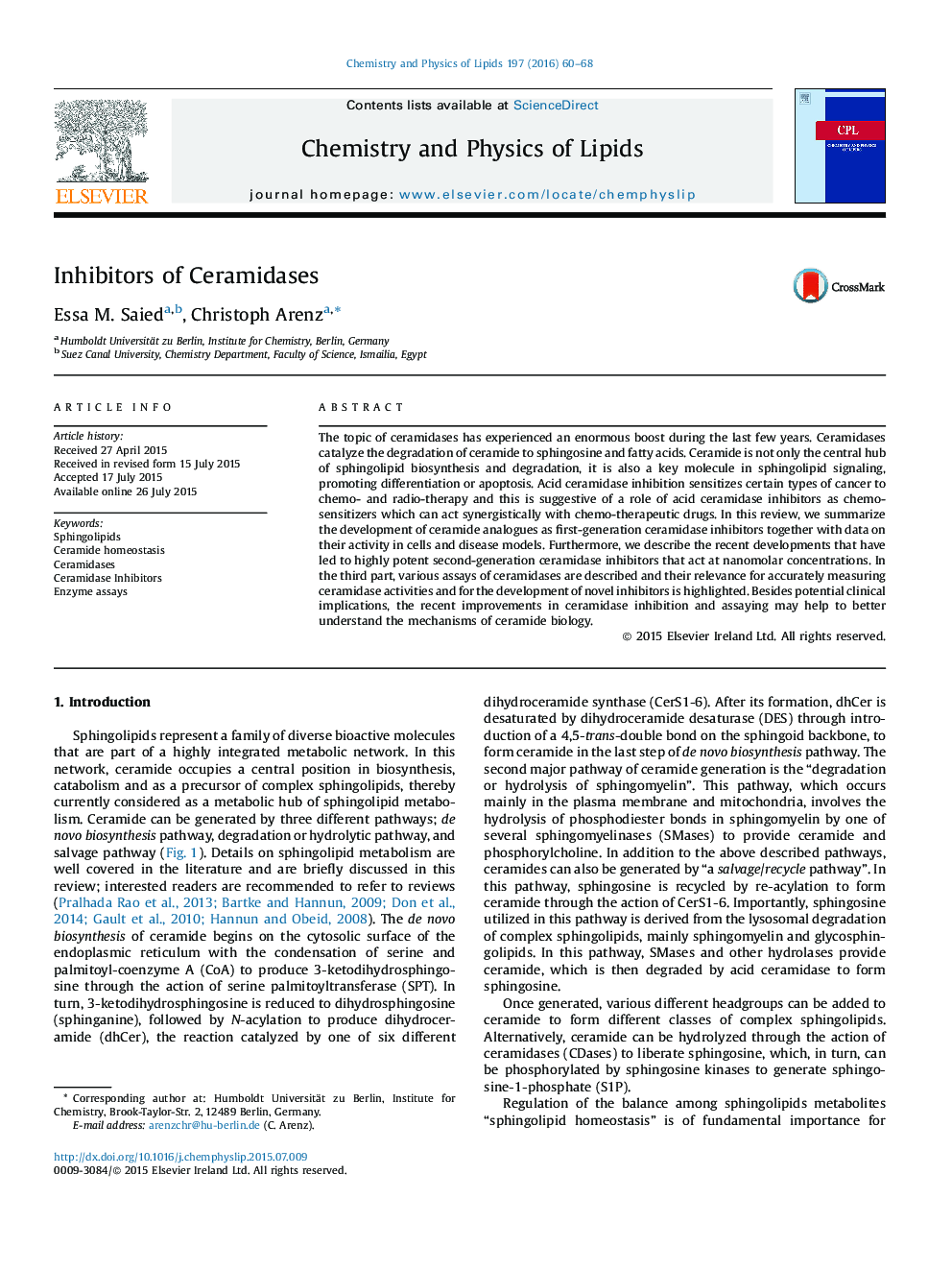| Article ID | Journal | Published Year | Pages | File Type |
|---|---|---|---|---|
| 1253287 | Chemistry and Physics of Lipids | 2016 | 9 Pages |
The topic of ceramidases has experienced an enormous boost during the last few years. Ceramidases catalyze the degradation of ceramide to sphingosine and fatty acids. Ceramide is not only the central hub of sphingolipid biosynthesis and degradation, it is also a key molecule in sphingolipid signaling, promoting differentiation or apoptosis. Acid ceramidase inhibition sensitizes certain types of cancer to chemo- and radio-therapy and this is suggestive of a role of acid ceramidase inhibitors as chemo-sensitizers which can act synergistically with chemo-therapeutic drugs. In this review, we summarize the development of ceramide analogues as first-generation ceramidase inhibitors together with data on their activity in cells and disease models. Furthermore, we describe the recent developments that have led to highly potent second-generation ceramidase inhibitors that act at nanomolar concentrations. In the third part, various assays of ceramidases are described and their relevance for accurately measuring ceramidase activities and for the development of novel inhibitors is highlighted. Besides potential clinical implications, the recent improvements in ceramidase inhibition and assaying may help to better understand the mechanisms of ceramide biology.
